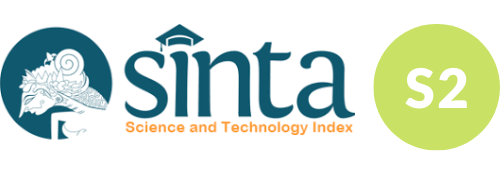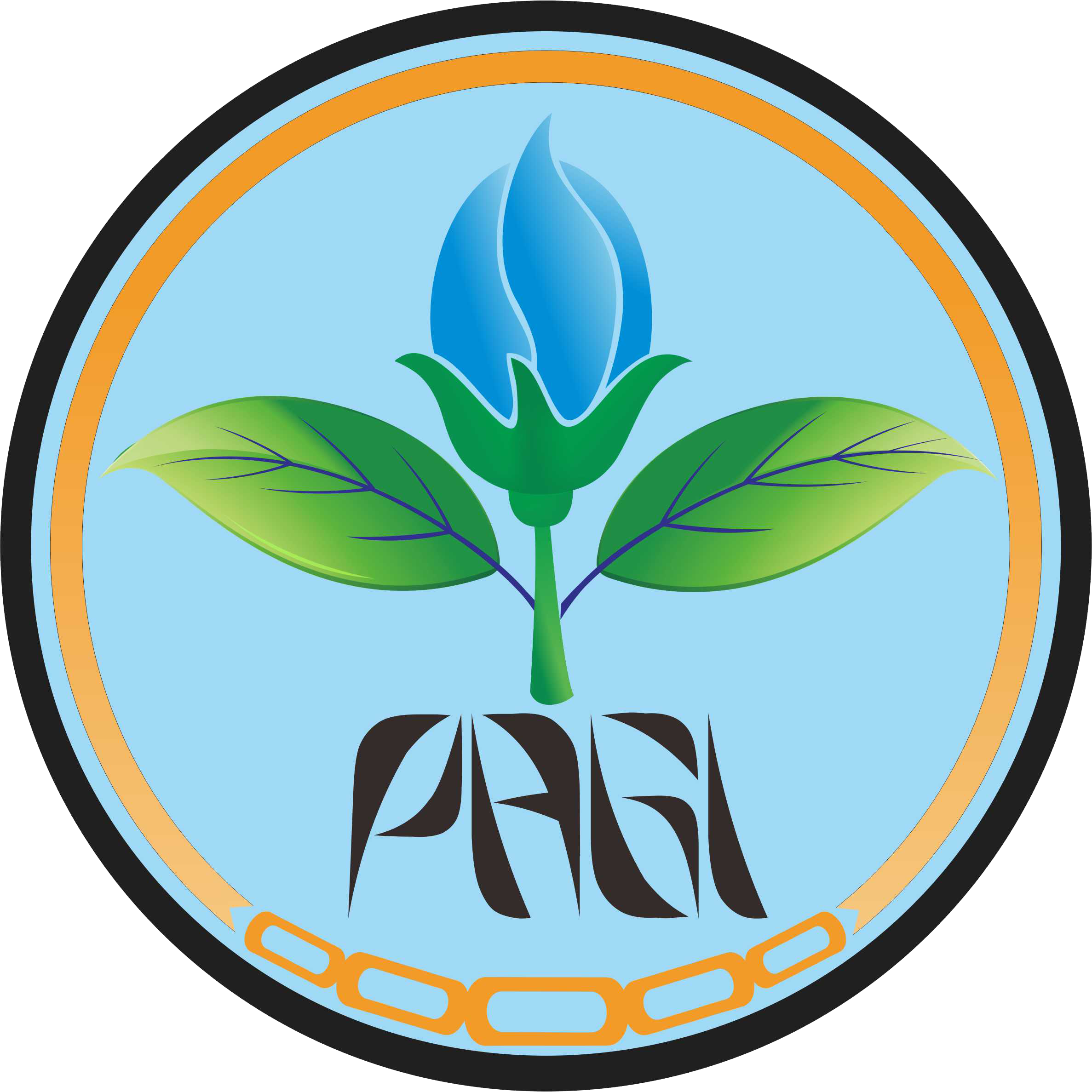Susceptibility of Shallot cv Tajuk Cultivated in Bantul and Kulon Progo Against Fusarium Disease
Abstract
Keywords
Full Text:
PDF(EN)References
Aisyah SN, Khoiruddin M, Hidayat T, Astuti A. 2022. Comparison on Fusarium basal rot occurrence among shallot cultivations in Bantul Regency. IOP Conf Ser Earth Environ Sci. 985:012052. https://doi.org/10.1088/1755-1315/985/1/012052.
Anggrasari H, Dhamira A, Maheresmi H. 2025. Shallot price forecast in traditional markets of the Special Region of Yogyakarta. SHS Web Conf. 212:04013. https://doi.org/10.1051/shsconf/202521204013.
Arifin Z, Gunawan I, Nursamukti A. 2025. Enhancing shallot cultivation efficiency through smart farming: Drone technology for precision land mapping and yield estimation. IOP Conf Ser Earth Environ Sci. 1490:012034. https://doi.org/10.1088/1755-1315/1490/1/012034.
Degani O, Dimant E, Margalit E. 2024. Impact of fusarium species composition and incidence on onion basal rot in northeastern israel. Horticulturae. 10(4):373. https://doi.org/10.3390/horticulturae10040373.
Delgado-Ortiz JC, Ochoa-Fuentes YM, Cerna-Chávez E, Beltrán-Beache M, Rodríguez-Guerra R, Aguirre-Uribe LA, Vázquez-Martínez O. 2016. Patogenicidad de especies de Fusarium asociadas a la pudrición basal del ajo en el Centro Norte de México. Rev Argent Microbiol. 48(3):222-228. https://doi.org/10.1016/j.ram.2016.04.003.
Dewi FS, Dewi RR, Abadi AL, Setiawan A, Aini LQ, Syib’li MA. 2025. Biocontrol of Fusarium oxysporum f.sp. cepae on Indonesian local garlic plants (Lumbu Hijau) using a consortium of Bacillus amyloliquefaciens B1 and arbuscular mycorrhizal fungi. Mycobiology.1-9. https://doi.org/10.1080/12298093.2024.2433826.
Diabankana RGC, Frolov M, Islamov B, Shulga E, Filimonova MN, Afordoanyi DM, Validov S. 2024. Identification and aggressiveness of Fusarium species associated with onion bulb (Allium cepa L.) during storage. J Fungi. 10(2):161. https://doi.org/10.3390/jof10020161.
Dinata GF, Ariani N, Purnomo A, Aini LQ. 2021. Pemanfaatan biodiversitas bakteri serasah kopi sebagai solusi pengendali penyakit moler pada bawang merah. J HPT. 9(1):28-34. http://dx.doi.org/10.21776/ub.jurnalhpt.2021.009.1.5.
Edel-Hermann V, Lecomte C. 2019. Current status of Fusarium oxysporum formae speciales and races. Phytopathology. 109(4):512-530. https://doi.org/10.1094/phyto-08-18-0320-rvw.
FAOSTAT. 2023. Onion production, area and productivity. http://www.fao.org/faostat/en/#data/QC.
Fauzia W, Maryani Y, Darnawi D. 2020. Pengaruh pemberian berbagai macam pupuk organik terhadap pertumbuhan dan hasil pada bawang merah (Allium ascalonicum L.) varietas thailand dan sarmo. Jurnal Ilmiah Agroust. 4(1):66-75.
Gordon TR. 2017. Fusarium oxysporum and the fusarium wilt syndrome. Annu Rev Phytopathol. 55(1):23-39. https://doi.org/10.1146/annurev-phyto-080615-095919.
Gusman TA, Zakiyyah Z, Nurudin A, Yulina IK. 2025. Development herbal syrup from shallot skin: The effect of cmc addition for bioactive compounds and proximate content. E3S Web Conf. 622:02007. https://doi.org/10.1051/e3sconf/202562202007.
Haapalainen M, Kuivainen E, Iivonen S, Niemi M, Latvala S. 2023. Pathogenicity of Fusarium oxysporum and Fusarium proliferatum isolates from symptomless onions (Allium cepa) and onions with Fusarium basal rot. Plant Pathol. 72(6):1122-1135. http://dx.doi.org/10.1111/ppa.13718.
Haapalainen M, Latvala S, Kuivainen E, Qiu Y, Segerstedt M, Hannukkala A. 2016. Fusarium oxysporum, F. proliferatum and F. redolens associated with basal rot of onion in Finland. Plant Pathol. 65(8):1310-1320. http://dx.doi.org/10.1111/ppa.12521.
Hadiwiyono, Sari K, Poromarto SH. 2020. Yields losses caused by basal plate rot (Fusarium oxysporum f. sp. cepae) in some shallot varieties. Caraka Tani. 35(2):250-257. https://doi.org/10.20961/carakatani.v35i2.26916.
Herlina L, Istiaji B, Wiyono S. 2021. The causal agent of Fusarium disease infested shallots in Java Islands of Indonesia. E3S Web Conf. 232:03003. https://doi.org/10.1051/e3sconf/202123203003.
Le D, Audenaert K, Haesaert G. 2021. Fusarium basal rot: Profile of an increasingly important disease in Allium spp. Trop Plant Pathol. 46:241–253. https://doi.org/10.1007/s40858-021-00421-9.
Mahanty B, Mishra R, Joshi RK. 2023. Fusarium oxysporum f. sp. cepae small RNAs (Foc-sRNAs) promote disease susceptibility in onion (Allium cepa L.) through cross kingdom RNA interference. Physiol Mol Plant Pathol. 125:102018. https://doi.org/10.1016/j.pmpp.2023.102018.
Mariani M, Suprapta DN, Sudana IM, Temaja IGRM, Sudantha IM. 2022. First report of Nectria haematococca causing a moler disease on shallots in West Nusa Tenggara, Indonesia. Biodiversitas. 23(5). http://dx.doi.org/10.13057/biodiv/d230559.
Neda N, Zahra BH, Mohammad RH, Mitra A, Mohammad RM, Akram GA, Maryam M-S, Mehdi M. 2025. Promising effects of Persian shallot extract on the serum markers and blood pressure of patients with metabolic syndrome: A double-blinded randomized controlled trial. J Tradit Chin Med. 45(1):100. https://doi.org/10.19852/j.cnki.jtcm.2025.01.008.
Pasaribu S. 2017. Pengaruh dosis pupuk kompos gulma siam terhadap pertumbuhan dan hasil tiga varietas bawang merah. [Yogyakarta ]: Universitas Mercubuana.
Poursakhi S, Asadi-Gharneh HA, Nasr-Esfahani M, Abbasi Z, Khankahdani HH. 2024. Identification of novel associations of candidate marker genes with resistance to onion-Fusarium basal rot interaction pathosystem. Plant Gene. 37:100440. https://doi.org/10.1016/j.plgene.2023.100440.
Pustika A, Purwaningsih H, Rahmawati R, Darini M. 2024. Fusarium wilt of some shallot local varieties in yogyakarta alternating-bed (surjan) agroecosystem. IOP Conf Ser Earth Environ Sci. 1377:012108. https://doi.org/10.1088/1755-1315/1377/1/012108.
Ridqi MF, Kusumaningsih A. 2025. Income risk of shallot farming in Selopamioro Village, Imogiri Sub-district, bantul Regency. IOP Conf Ser Earth Environ Sci. 1518:012023. http://dx.doi.org/10.1088/1755-1315/1518/1/012023.
Sharma S, Mandal S, Cramer CS. 2024. Recent advances in understanding and controlling Fusarium diseases of Alliums. Horticulturae. 10(5):527. https://doi.org/10.3390/horticulturae10050527.
Sholeh MI, Nurcahyanti SD. 2023. Perkembangan penyakit moler (Fusarium oxysporum f. sp. cepae) pada sentra produksi bawang merah di Kabupaten Probolinggo. Berkala Ilmiah Pertanian. 6(2):56–62. http://dx.doi.org/10.19184/bip.v6i2.35392.
Sidharthan VK, Pothi-Raj G, Suryaprakash V, Singh AK, Aggarwal R, Shanmugam V. 2023. A synergic and compatible microbial-based consortium for biocontrol of Fusarium wilt of tomato. Phytopathol Mediterr. 62:183-197. http://dx.doi.org/10.36253/phyto-13055.
Sogoba KH, Kadidia K, Alassane O, Mohamed S, Itolou KA, Harouna S, Claudine C. 2022. Pathogenic characterization of three Fusarium species associated with onion (Allium cepa L.) in Burkina Faso. http://dx.doi.org/10.33687/phytopath.011.03.4327.
Statistics Indonesia. 2025. Agricultural statistic for horticulture: Production of annual vegetable and fruit crops in Yogyakarta Province 2024. June 10th, 2025.
Statistics of Yogyakarta Province. 2024a. Curah hujan per bulan (mm), 2023.
Statistics of Yogyakarta Province. 2024b. Statistics of horticulture in Yogyakarta Province 2023.
Sutardi, Kristamtini, Purwaningsih H, Widyayanti S, Arianti FD, Pertiwi MD, Triastono J, Praptana RH, Malik A, Cempaka IG. 2022. Nutrient management of shallot farming in sandy loam soil in Tegalrejo, Gunungkidul, Indonesia. Sustainability. 14(19):11862. https://doi.org/10.3390/su141911862.
Wibowo A, Santika IA, Syafitri LM, Widiastuti A, Subandiyah S, Harper S. 2023. Incidence of twisted disease and cultivation practice of shallot farmers in Bantul Coastal Area, Yogyakarta, Indonesia. J Trop Plant Pest Dis. 23(1):23-30. https://doi.org/10.23960/jhptt.12323-30.Refbacks
- There are currently no refbacks.






